Aloe Vera For Pets, Why And How
Aloe vera is one of my favourite plants on the planet. Incredibly versatile but most effective on skin issues. It’s not only rich in vitamins A, C and E but it is a clinically proven antibacterial, antiviral and anti-inflammatory. Furthermore Aloe Vera is shown to permeate the skin more effectively than any other remedy available today, hence the drug industry is now exploiting it’s unique properties to allow various pharmaceutical creams and potions to better penetrate than regular creams.
I don’t use the words “clinically proven” above lightly. See the end of our article for literally dozens of clinical trials proving Aloe’s efficacy at promoting and reducing wound healing time (compared to control humans not receiving Aloe), it’s anti-inflammatory properties, burn-healing (including sunburn) properties as well as fighting various bacteria such as those involved in painful oral conditions and acne.
Uses For Aloe Vera On/In Dogs…
Historically Aloe vera has been used for wound healing, on burns, on dry or cracked skin as well as conditions such as dermatitis.
Of particular focus for us here today however is that Aloe is a powerful anti-fungal. In a study from 2004, Aloe gel was applied to Petri dishes containing three different growths of fungus. In all three cases, the Aloe gel significantly inhibited the fungi’s ability to spread.
More recently, scientists have isolated a novel protein from within Aloe that acts as an anti-fungal agent (which no doubt will be made available to you in a fancy cream from your nearest Pharmacy soon!). The protein, known as 14kDa, has a particular penchant for the Candida family (specifically C. albicans, C. krusei, and C. paraprilosis). This is particularly interesting when you consider only a few months ago we highlighted the growing realm of science that suggests an internal Candida overgrowth in some dogs is the cause of all sorts of chronically itchy skin conditions.
Thus while Aloe is handy to have around for any minor scrapes, abrasions, wound-dressing, burns, dry or irritated skin, it is also excellent for so many common conditions of dogs today which has an underlying fungal basis including: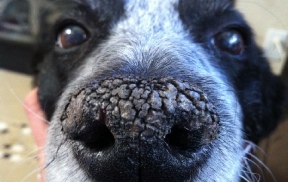

- Dandruff. Did you know dandruff is often due to a little fungus that lives in the pores?! Aloe applied liberally here not only soothes, moisturises and nourishes the dry skin but kills the baddie causing the problem. Leave on the dog for 30mins then rinse.
- Dry, cracked noses or paws (Aloe is also excellent for Athletes foot in humans)
- Ringworm (a fungus that hates Aloe, big glob of raw aloe applied
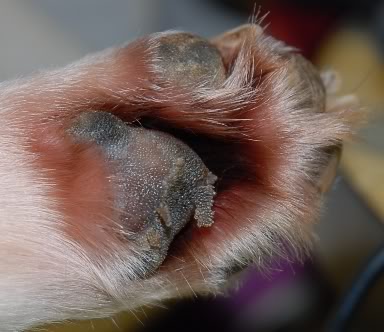
Note the dry, flaky skin which can be painful but also the red fur? That is a fungus that grows in the nice, warm, damp conditions. Aloe tackles all of it. directly to area, repeat, repeat, repeat)
- Aloe gel rubbed into hot spots provides instant relief
- Use Aloe to clean yeast infections inhabiting skin folds
- Interdigital cysts
- Reduces the inflammation that causes arthritis, when taken internally
- Taken internally Aloe is shown to fight Candida overgrowths in humans. For chronically itchy dogs where all the usual causes of itch in dogs have been addressed (no wheat, no dairy, no carbs, no dry food or treats etc), a suitable internal aloe product should be tried. A yeast over-bloom in a body is merely a symptom that your body is out of kilter and unable to maintain harmony. While Aloe will kill Candida, taken internally it nourishes the skin of the gut, helping it to eliminate wastes and toxins, improving circulation, feeding with vitamin C and E. This should boost the health of the pet internally, assisting it in regaining control of the whole yeast imbalance.
How To Use Aloe In Dogs…
Raw aloe is great and so easy. Go to the supermarket. Buy an aloe plant. Put in the kitchen. They’re very hardy little plants and will grow anywhere. When you need some simple snap off one of the leaves and rub the gel inside directly on to a burn, wound, chapped skin, cracked nose etc. This is for external use only as too much Aloe can make them sick.
Note: Do not be alarmed should the wound or skin irritation appear to get worse initially. This is common with Aloe Vera and what natural vets call “the healing crisis”. Aloe is inceasing the rate at which the skin is healing itself, concentrating the healing time, which can result in extra profusion. Can last for a few days. Stay the course. Or simply treat one area for a few days first, the results will encourage you forward. For best results
For best results it is often recommended you take aloe orally also. However it can be quite bitter (and can be a toxic if taken in large doses) so please make sure to follow the instructions in this LiveStrong article that shows you how to dilute it. In short you get a little of the raw aloe gel/meat and blend with lots of water, they should drink it happily enough. One tablespoon of raw gel per 1 litre of distilled water would be considered a very dilute, safe but effective dose for dogs.
Great Aloe Vera For Dogs
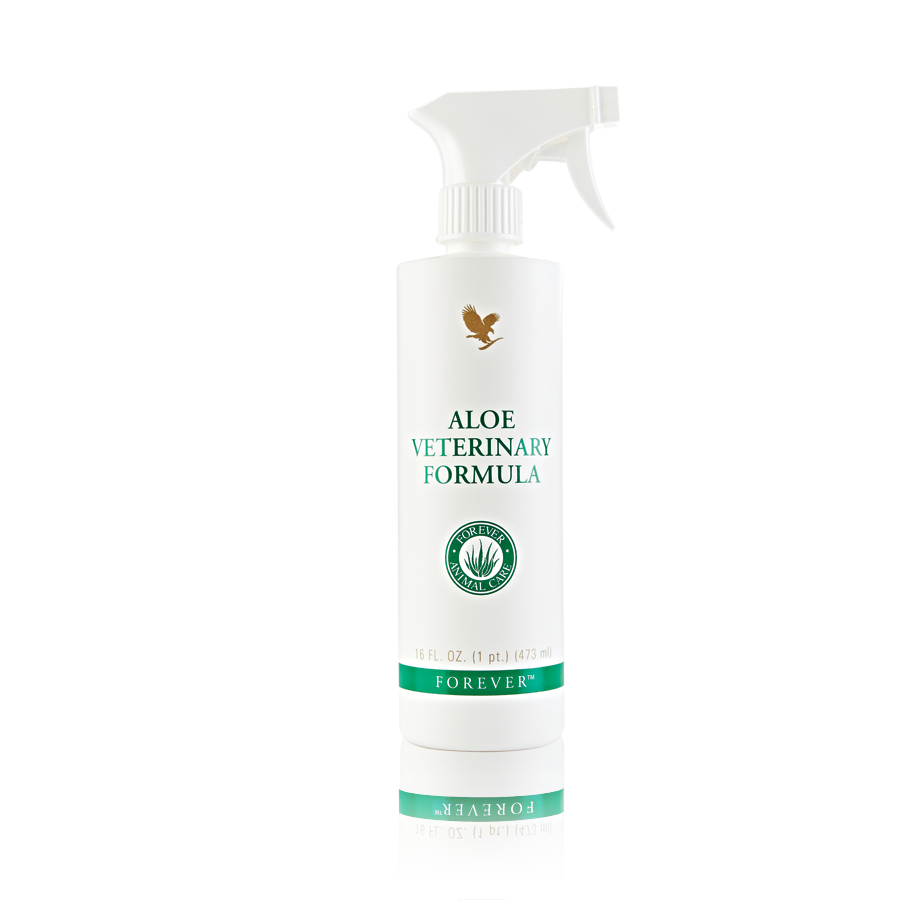
I am currently stocking the best natural Aloe product I can find called Aloe Veterinary Formula. A pint costs you less than €20. It’s a spray that can be used topically on any and all issues mentioned above as well as a simply coat conditioner. All dog presses should have it but certainly any dogs suffering any of the conditions mentioned above. It can be applied directly to the affected area (wash with water and aloe spray first to remove any debris then follow up with another spray coating. For optimal results use several times daily. Bandage areas that may be licked as, for best results, the aloe needs time to penetrate. Not recommended for deep puncture wounds. Avoid eyes).
There’s a whole host of these Aloe Vera products by Forever Living. All can be used on our pets where appropriate:
- Aloe gelly for minor skin issues,
- Aloe gel creams infused with propolis – a powerful, soothing moisturiser for dry cracked skin such as noses and paws
- Aloe heat lotion – a deep-penetrating Aloe gel that brings heat relief to strained muscles and stiff joints
- Aloe gel in a suitable drink form for boosting internal digestion and wellness
- Aloe tooth gel which not only fights plaque but will help protect teeth and gums by fighting mouth infections
- Aloe liquid soap – excellent for cleaning the skin of sensitive types and those prone to dandruff and eczema
References And Tables

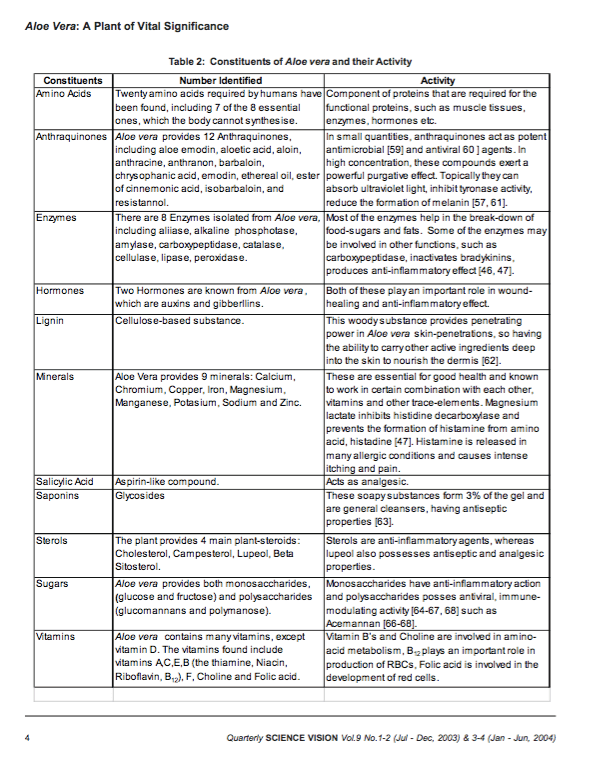
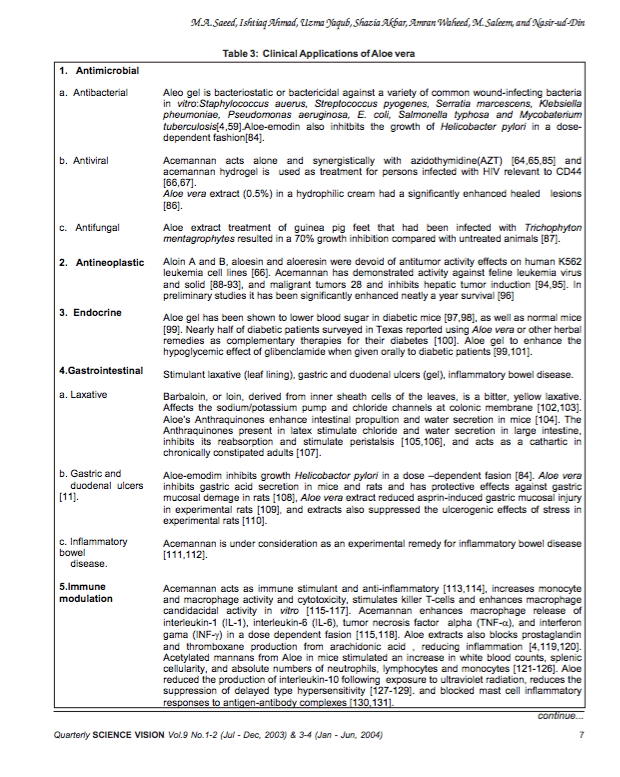
Moser, K., Kriwet, K., Naik, A., Kalia,Y.N., Guy, R.H., 2001. Passive skin penetration enhancement and its quantification in vitro. Eur. J. Pharm. Biopharm. 52, 103–112.
Visuthikosol, V., Chowchuen, B., Sukwanarat, Y., Sriurairatana, S., Boonpucknavig, V., 1995 . Effect of aloe vera gel to healing of burn wound a clinical and histologic study. J Med Assoc Thai. 78(8),403-09.
Meadows, T.P., 1980. Aloe as a humectant in new skin preparations.Cosmet.Toiletries 95, 51– 56.
Pugh, N., Ross, S., ElSohly, M., Pasco, D., 2001. Characterisation of aloeride, a new highmolecular- weight polysaccharide from Aloe Verawith potent immunostimulatory activity. J. Agr. Food Chem. 49, 1030–1034.
Reynolds, T., Dweck, A.C., 1999. Aloe Vera leaf gel: a review update. J. Ethnopharmacol. 68, 3– 37.
Grindlay, D., Reynolds, T., 1986. The Aloe vera phenomenon: a review of the properties and modern uses of the leaf parenchyma gel. J Ethnopharmacol. 16(2-3),117-51.
Mantle, D., Gok, M.A., Lennard, T.W., 2001. Adverse and beneficial effects of plant extracts on skin and skin disorders. Adverse Drug React Toxicol Rev. 20(2), 89-103.
Akhtar, M.A., Hatwar, S.K., 1996. Efficacy of aloe vera extract cream in management of burn wound. J Clin Epidemiol. 49,24.) Heggers, J., Kucukcelebi, A., Listengarten, D., Stabenau, J., Ko, F., Broemeling, L.D., et al., 1996.
Heggers, J., Kucukcelebi, A., Listengarten, D., Stabenau, J., Ko, F., Broemeling, L.D., et al., 1996. Beneficial effect of aloe on wound healing in an excisional wound model. J Altern Complement Med. 2,271–7.
Reuter, J., Jocher, A., Stump, J., Grossjohann, B., Franke, G., Schempp, C.M., 2008.Investigation of the anti-inflammatory potential of Aloe vera gel (97.5%) in the ultraviolet erythema test.Skin Pharmacol Physiol. 21(2), 106-10.
Davis, R.H., Donato, J.J., Hartman, G.M., Haas, R.C., 1994. Anti-inflammatory and wound healing activity of a growth substance in Aloe vera. J Am Podiatr Med Assoc. 84(2), 77-81.
Shelton, M., 1991 Aloe vera, its chemical and therapeutic properties. Int J Dermatol. 30,679–83.
Esua, M.F., Rauwald, J.W., 2006. Novel bioactive maloylglucans from Aloe Vera gel: isolation, structure elucidation and in vitro bioassays. Carbohyd. Res. 341, 355–364.
Guy, R.H., Potts, R.O., 1993. Penetration of industrial chemicals across the skin: a predictive model. Am. J. Ind. Med. 23, 711–719.
Choi, S., Chung, M.-H., 2003. A review on the relationship between Aloe Vera components and their biological effects.Semin.Integr. Med. 1, 53–62.
Collins, C.E., Collins, C., 1935. Roentgen dermatitis treated with fresh whole leaf of Aloe vera. American Journal of Roentgenology.33(3), 396-97.
Halles, J.S., 1990. A drug for all seasons.Medical and pharmacological history of aloe. Bull N Y Acad Med. 66(6),647-59.
Source: Original Article
Source: Original Article
Aloe Vera For Pets, Why And How
![]() Reviewed by Isabel Leao
on
1:44:00 pm
Rating:
Reviewed by Isabel Leao
on
1:44:00 pm
Rating:

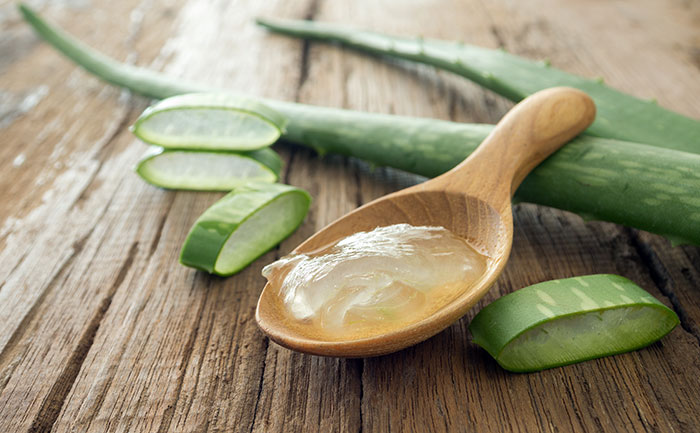











No comments: